Erez Marom Photography
Shooting Kīlauea Volcano, Part 3: At Sea
Posted on 1st June, 2018 - Back to Blog Listings
In the first part of this series, I talked about shooting Kilauea's lava surface-flows using a drone. In the second part I talked about shooting the lava with a DSLR from the ground. This time, I'd like to take you on the mini-adventure of sailing on the Pacific's rough waters and shooting the lava entering the water at the Kamokuna Ocean Entry from a dedicated lava-viewing boat.
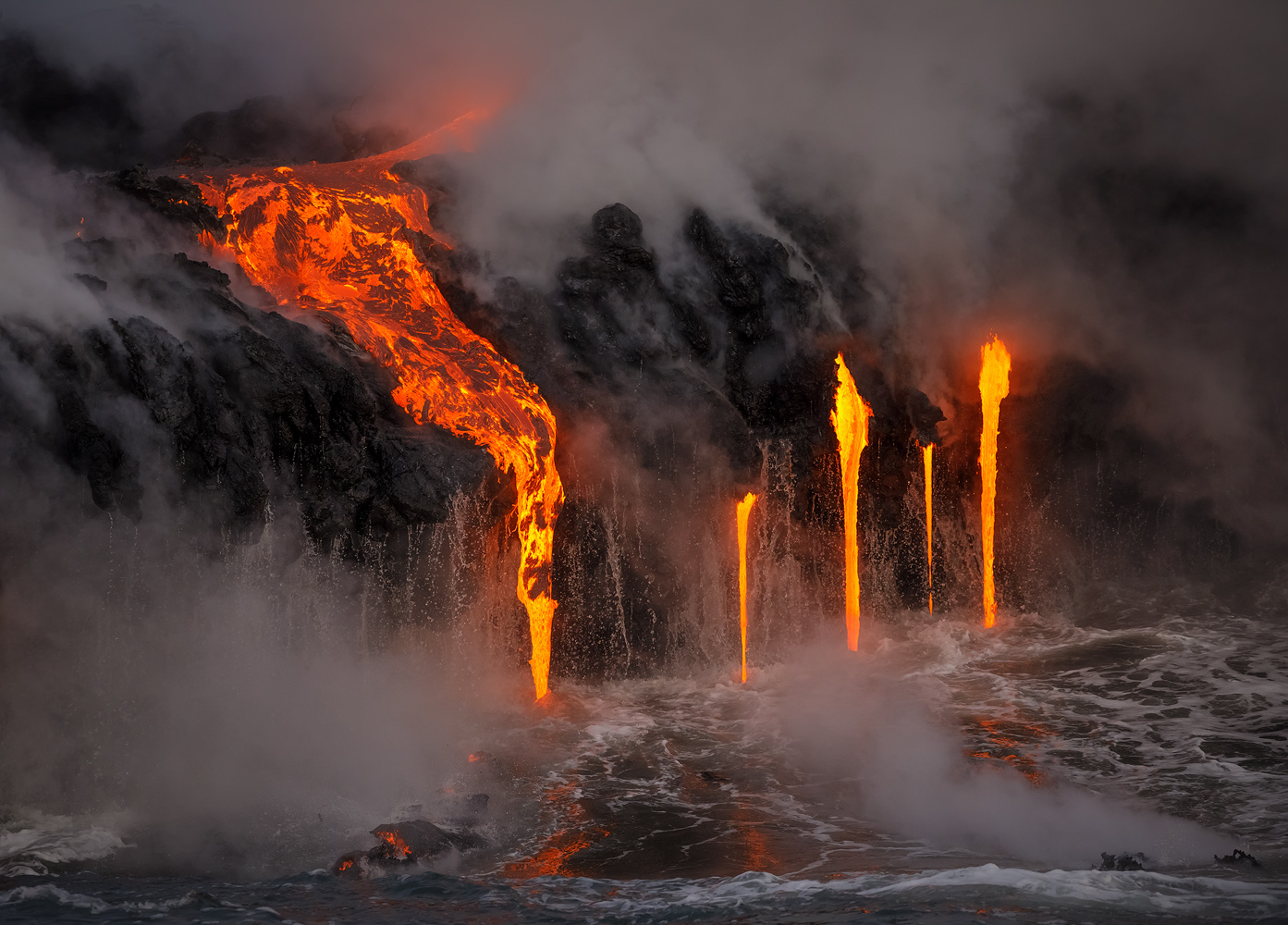
Please note that lava flow is never guaranteed. As I'm writing this, the ocean entry is inactive, so it's always good to check the situation before traveling. I was a bit anxious before heading out to the ocean. I suffer from severe motion sickness, and while pills help, they won't keep my food in my belly if the water is rough. I was overwhelmingly relieved to hear that the ocean was supposed to be quiet the morning of our sail. I still gulped down 4 pills just in case!
Several providers offer dedicated lava-viewing trips, and they can easily be found online. Most offer the excursion at several fixed times each day. It was an easy choice to go at morning twilight, since I'd get nighttime, twilight and sunrise images in one sail. I chose a large boat with room for 50 people, give or take. When we were allowed on, I did my best to find a spot at the front of the seating area, since this would give me a larger field of view and more time doing actual shooting. The sail wasn't cheap—I paid $250—but it was very much worth it.
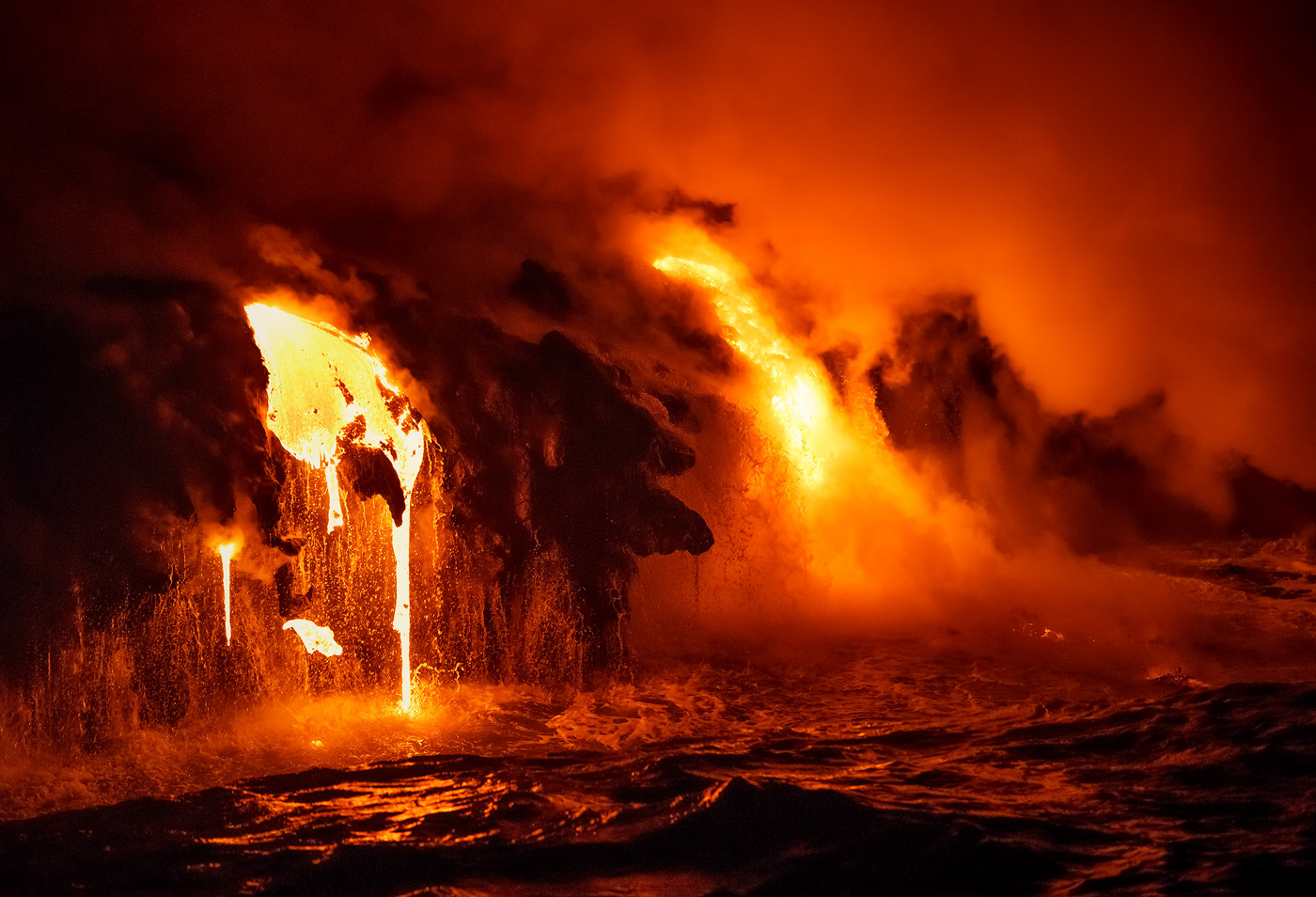
Arrival at the ocean entry takes about 30 minutes of fast sailing in open ocean. Bear in mind that this can be a problem if you suffer from motion sickness like I do, so please take precautions or you'll be very sorry. Upon arrival at the actual location, I was astounded to see the hectic clash of 1100-degree molten rock and ocean water. The temperature difference creates constant steam, and this, together with the ever-changing lava formations, creates an infinite variety of possible shots. A true delight for someone who thrives on shooting changing landscapes.
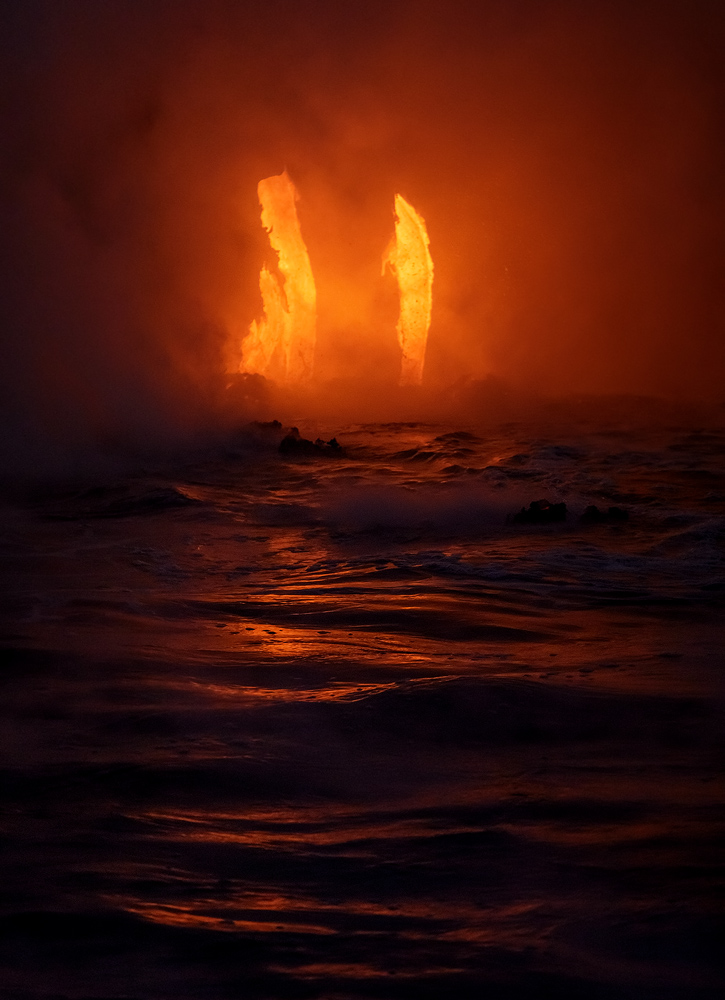
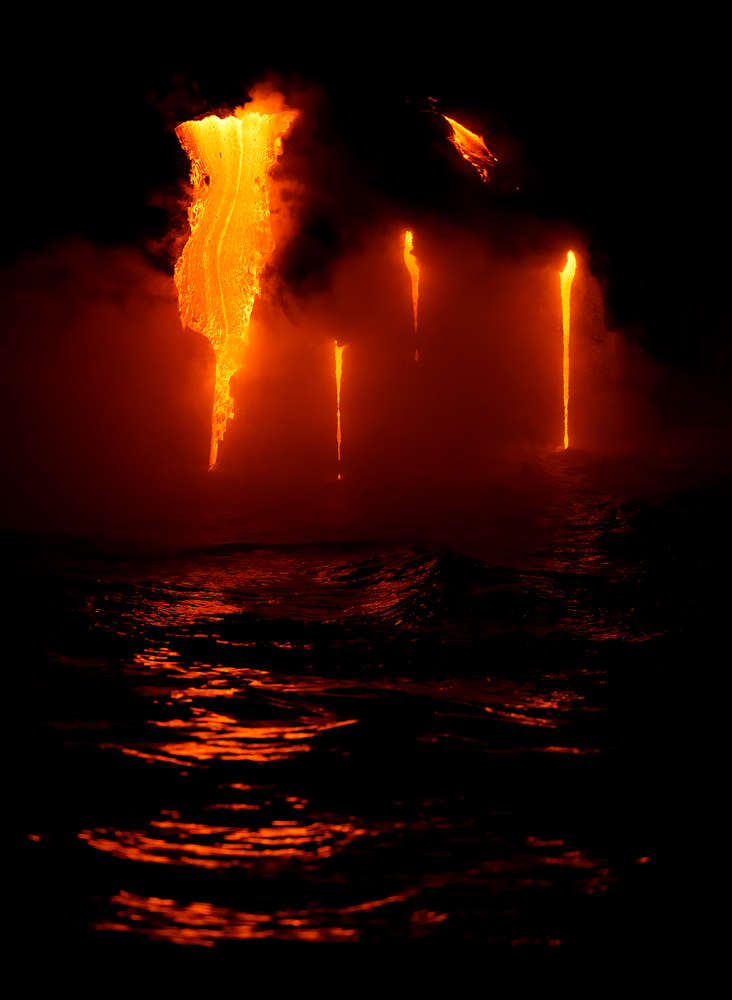
There are shapes created not only in the lava. The waves, crashing on the black rock and pushed by the steam, also create interesting shapes that are worth capturing.
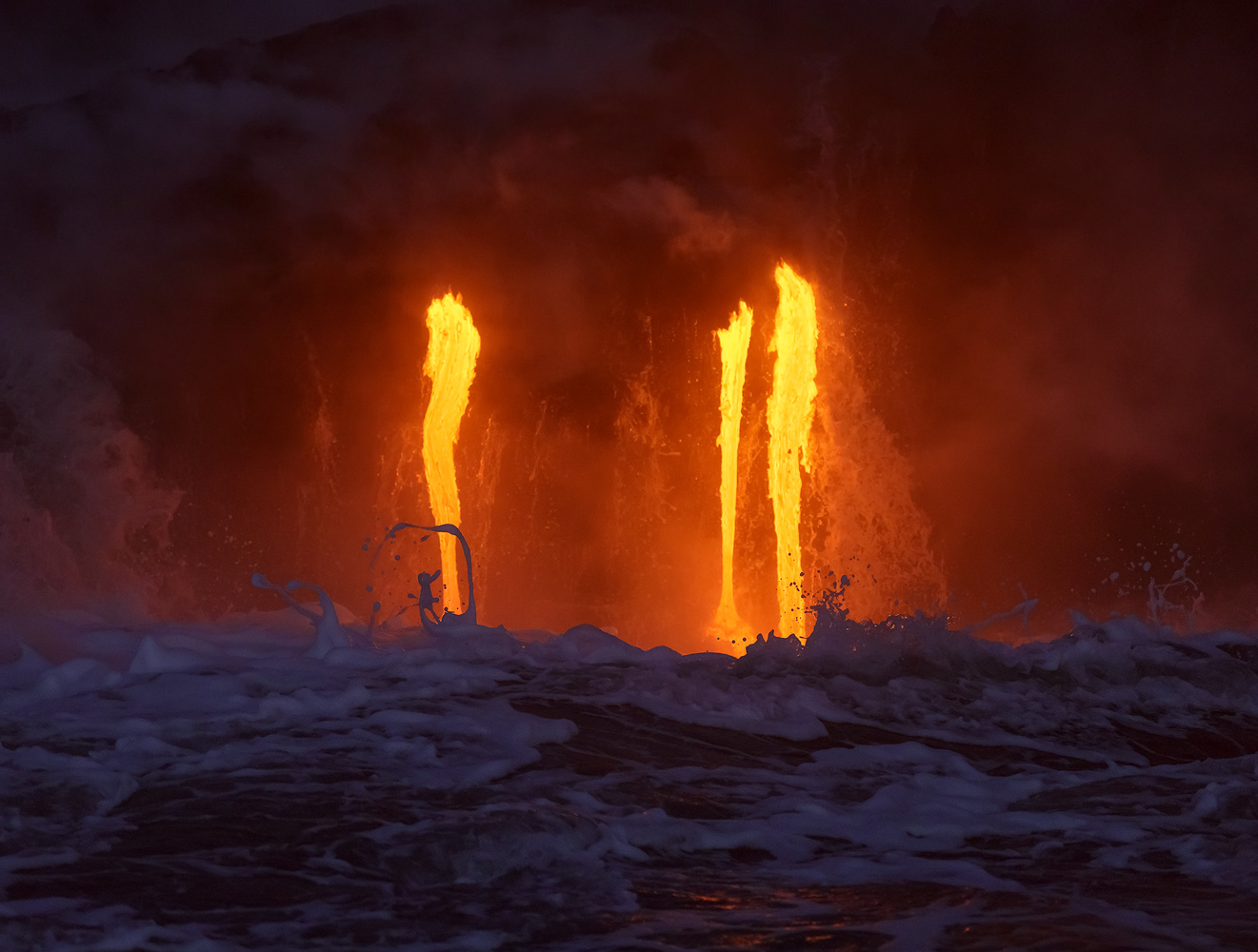
Technically, there are many challenges one faces when shooting lava from a boat. Upon arrival, when it's still nighttime, the global contrast in the scene is almost impossible to deal with. The lava is more than a few stops brighter than the solid rock and the water. Add the constant change in brightness and the result is often blown out. The photographer needs to continuously check the histogram and make sure the best compromise is made.
On my Canon 5D4, I tried not to have the brights overly exposed, since shadows are a bit easier to recover.
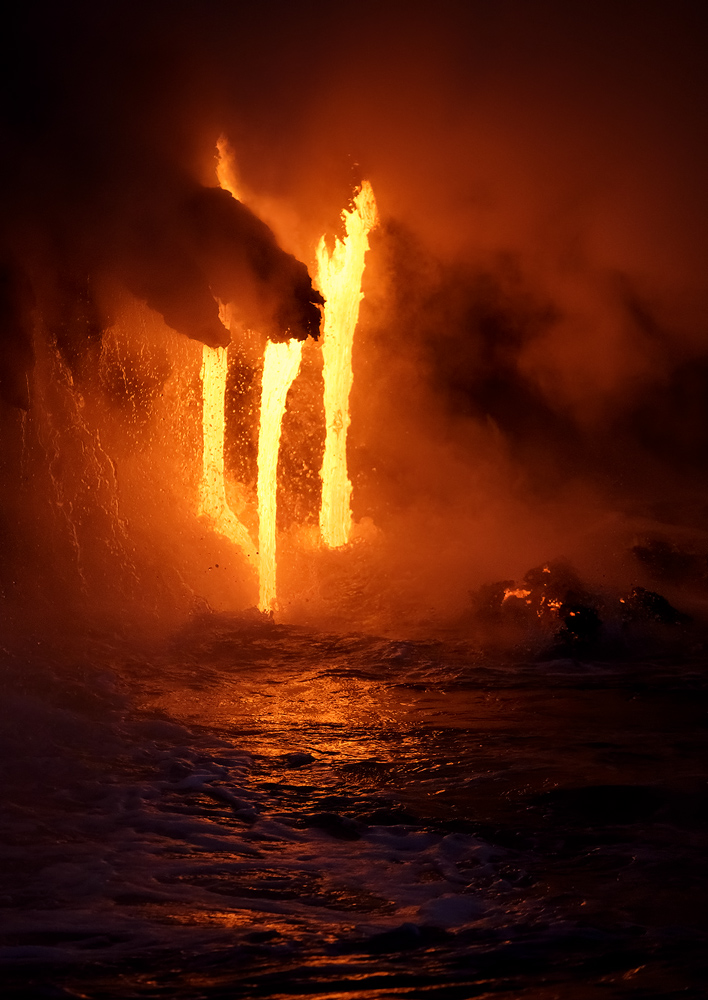
Since long exposures are out of the question (you're on a rocking boat), and longer focal lengths are often used, high exposure speeds and thus very high ISO are required when shooting at nighttime. I normally used ISO 6400, just to get some detail in the water and the rocks.
I aimed to expose between 1/500 and 1/1000 sec with my 70-300mm to overcome the constant motion. Since frequent and immediate focal length changes were necessary, I had to have the exposure speed on the high end.
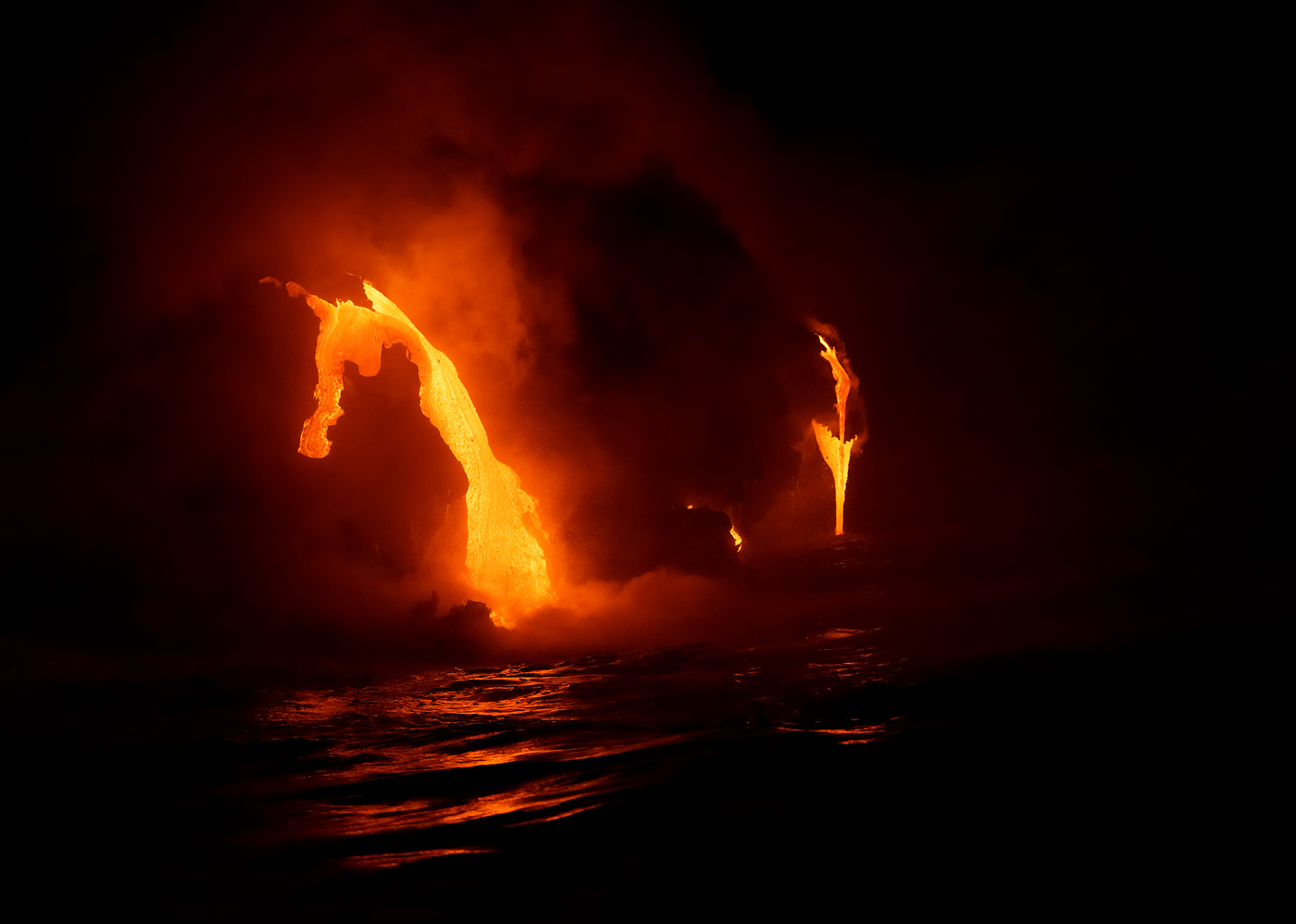
Luckily, when dawn strikes and ambient light begins to appear, global contrast and brightness levels improve a great deal. This was my favorite time to shoot, as the blend of colors (red from the lava, blue from the ocean at twilight) was wonderful, and shooting conditions were easier—lower ISO required and less concern about contrast management.
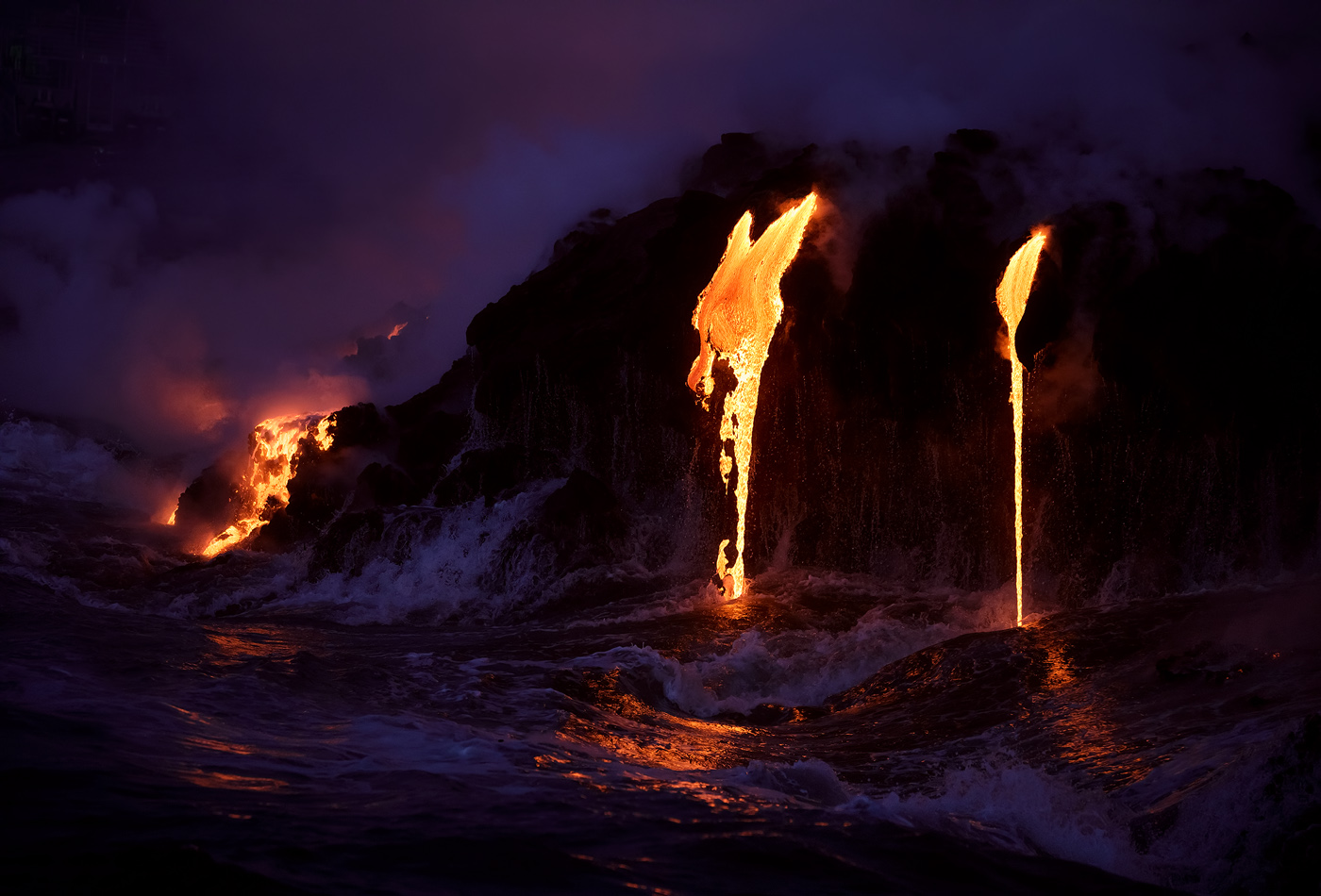
As the light increases and sunrise approaches, the contrast goes down, and the extreme look with it. They give way to a more silky, matted look and a more balanced, easier to swallow histogram. Shooting at this stage is much easier and more fun. The lack of concern allowed me to concentrate on finding interesting patterns and creating compelling compositions.
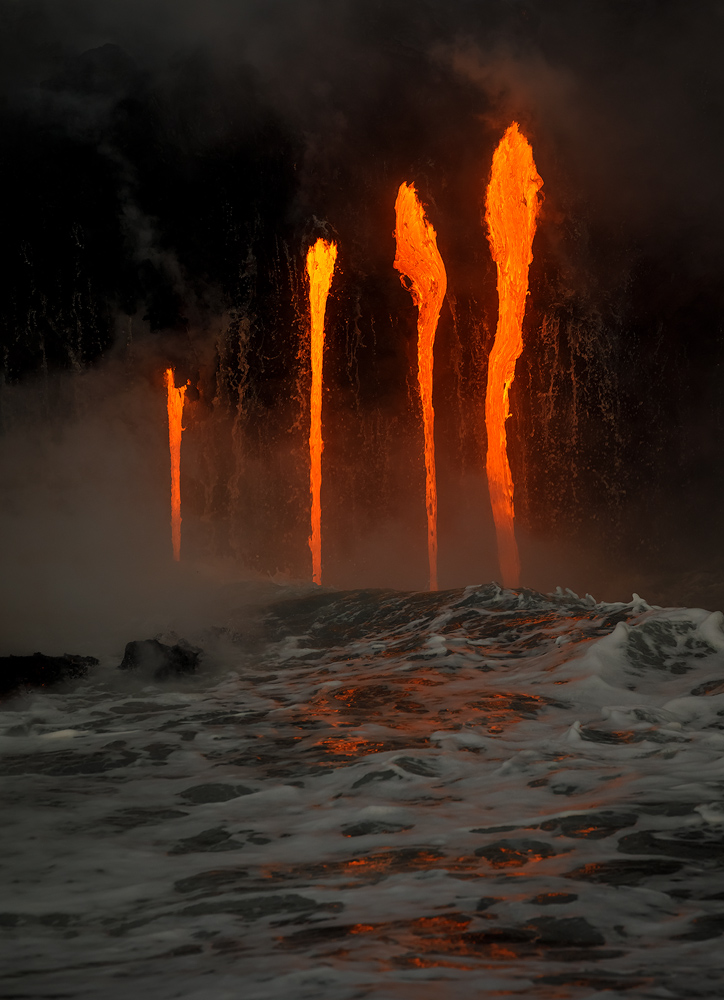
These conditions were also great for putting more emphasis on the meeting of lava and water. At some points, the waves crash on the lava and flow on top of it, which looks a bit surreal.
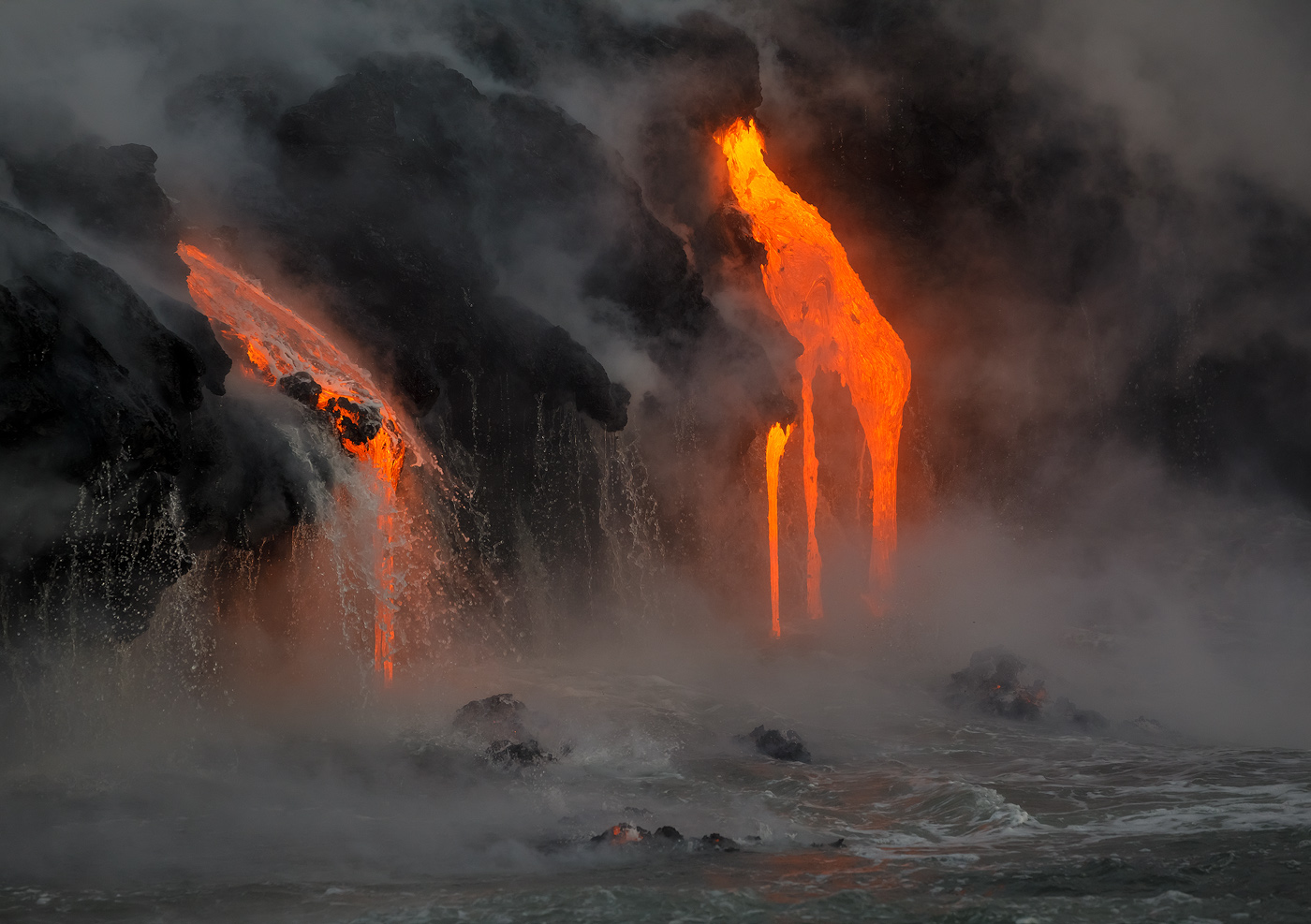
Lastly came the sunrise. Luck struck again and this too was beautiful. I hope this last image gives you a feel of what it was like to be there, in the middle of the Pacific, watching Earth's molten interior flowing to meet the water.
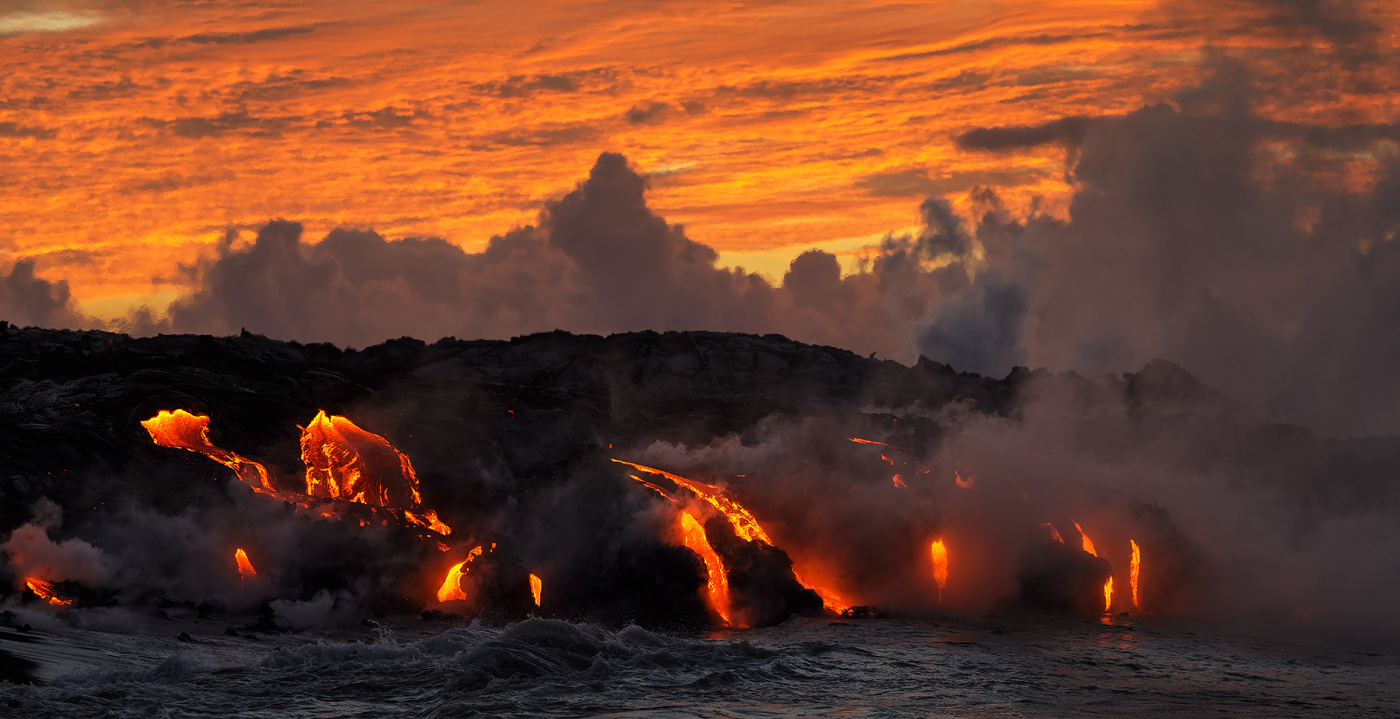
In the next and final article in this series, I'll write about shooting the lava from a helicopter.
